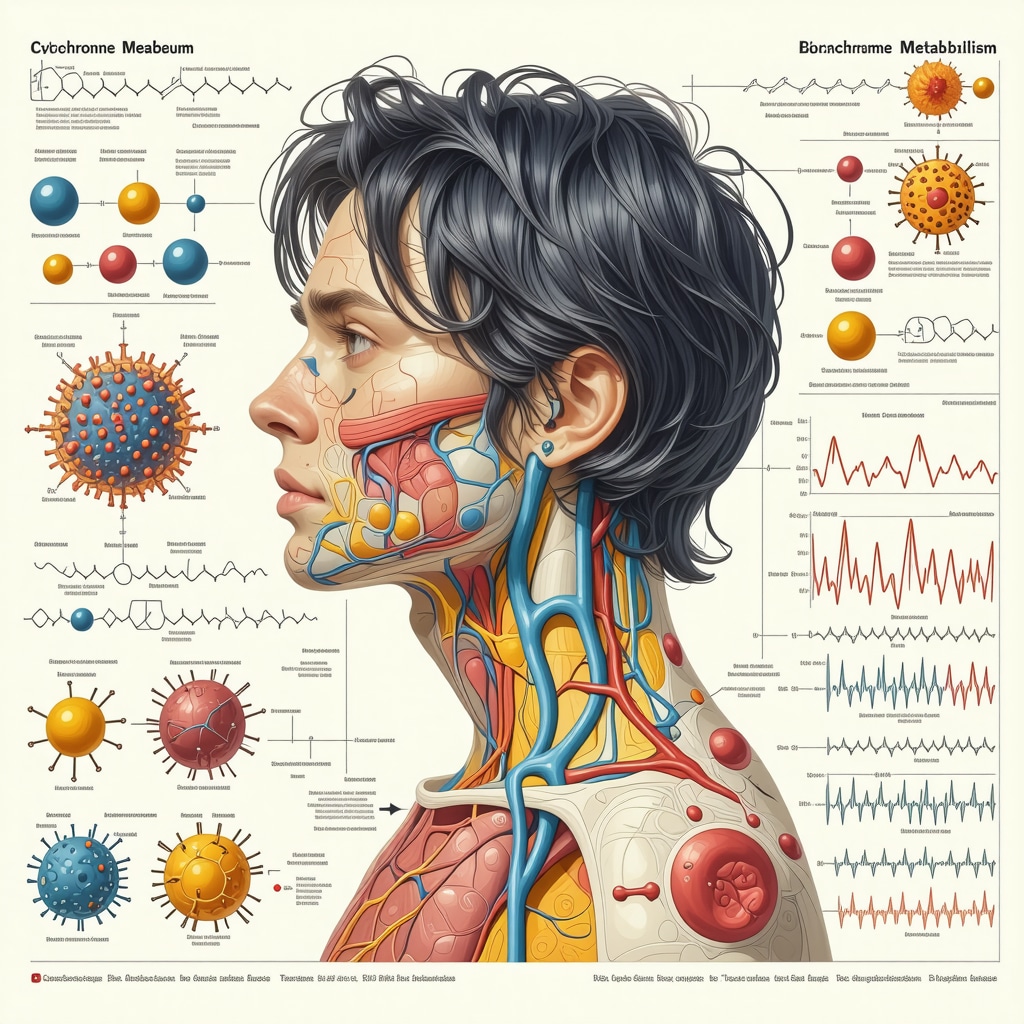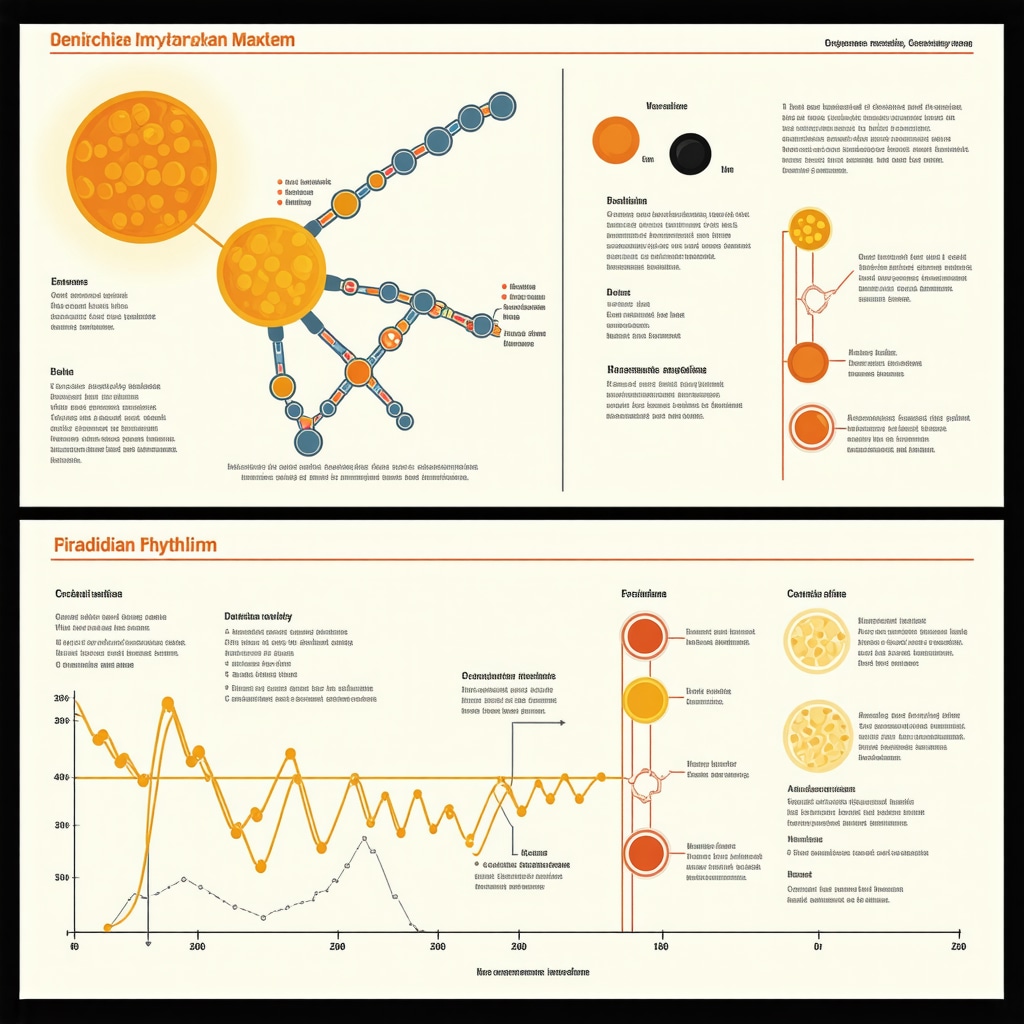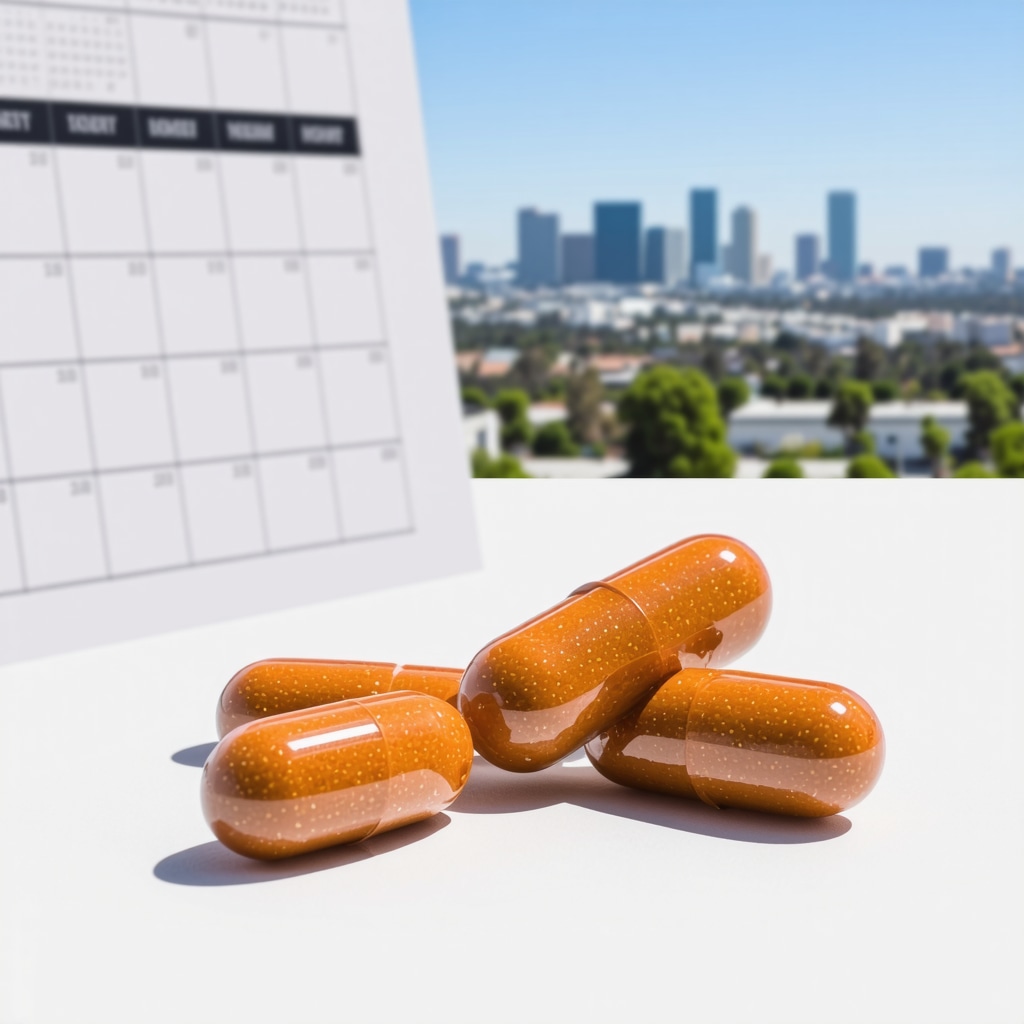The Science Behind Hormone Pellets: Why Timing Matters
Hormone pellet therapy has emerged as a revolutionary approach in bioidentical hormone replacement therapy (BHRT), offering a steady, consistent release of hormones such as testosterone and estrogen. Unlike daily pills or creams, these small pellets are implanted subcutaneously, providing a continuous supply of hormones tailored to individual needs. But how often do you need hormone pellets? Understanding the timing is crucial for optimal results and symptom management.
Decoding the Hormone Pellet Lifespan: What Influences Duration?
Typically, hormone pellets last between three to six months, depending on various factors including metabolic rate, hormone dosage, and lifestyle. Active individuals with faster metabolisms in San Diego’s sunny climate may metabolize pellets quicker, necessitating more frequent replacements. Conversely, those with slower metabolism might experience prolonged hormone release. Personalized hormone testing prior to pellet insertion helps clinicians determine the ideal dosing and timing, ensuring hormone levels remain balanced and effective throughout the treatment period.
How Personalized Is Your Pellet Therapy? Factors That Affect Replacement Frequency
Hormone pellet therapy is not one-size-fits-all. Age, gender, body composition, and the severity of hormone deficiency all play critical roles. For example, women undergoing menopause might require different intervals compared to men treating low testosterone. Additionally, lifestyle factors such as diet, exercise, and stress levels can accelerate hormone metabolism. Regular follow-up appointments involving hormone level assessments allow San Diego providers to fine-tune pellet replacement schedules, maximizing therapeutic benefits while minimizing side effects.
How Do I Know When It’s Time for a New Hormone Pellet?
Recognizing the signs that your hormone pellets are wearing off is essential. Symptoms like fatigue, mood swings, decreased libido, or hot flashes may indicate declining hormone levels. Some patients report a noticeable drop in energy or quality of life as the pellet’s effects wane. A hormone panel test, ideally done every three to six months, provides an objective measure to guide timely pellet replacement. Working with experienced clinicians in San Diego who specialize in hormone balancing ensures your therapy adapts dynamically to your changing needs.
Integrating Hormone Pellet Therapy With San Diego’s Unique Lifestyle
San Diego’s active and outdoor-oriented lifestyle often demands a hormone regimen that supports sustained vitality and wellness. Hormone pellets offer the convenience of infrequent dosing, freeing patients from daily medication routines. However, combining pellet therapy with natural lifestyle strategies—such as balanced nutrition, stress management, and exercise—can augment hormone efficacy. For those interested in exploring holistic approaches alongside BHRT, resources like combining BHRT with diet and lifestyle for hormone balance provide valuable insights.
For more on managing menopause symptoms naturally in San Diego and how hormone therapy can help, check out our guide on menopause weight gain and BHRT.
Hormone pellet therapy is a nuanced process requiring expert oversight. To explore personalized hormone balancing options or schedule a consultation, visit San Diego Hormone Therapy’s contact page and take the next step toward hormone harmony.
Authoritative source: The Endocrine Society highlights that individualized hormone dosing and monitoring are key to maximizing the safety and effectiveness of hormone replacement therapies (source).
Listening to Your Body: When to Adjust Your Hormone Pellet Schedule
One of the most important lessons I’ve learned from my journey with hormone pellet therapy is the value of truly tuning into how my body responds over time. Initially, I was told to expect pellets to last about four months, but my experience showed me that this can vary greatly depending on daily habits and even stress levels. There were weeks when I felt energetic and balanced, followed by days where fatigue and mood dips crept back in. These fluctuations taught me that hormone pellet timing isn’t just about the calendar; it’s about consistently monitoring physical and emotional cues.
That’s why I highly recommend regular hormone testing. As noted by The Endocrine Society, personalized dosing and monitoring are critical for safe and effective hormone replacement therapy (source). These tests can provide clarity on when your hormone levels start to dip, allowing your healthcare provider to adjust pellet replacement schedules before symptoms fully return.
How Does Your Lifestyle Influence Pellet Longevity?
Living in San Diego, I’ve embraced an active lifestyle filled with outdoor activities, but I realized this also means my metabolism is quite high. This naturally speeds up how quickly my body processes hormones, requiring me to be more vigilant about pellet timing. On days packed with hiking or intense workouts, I sometimes noticed quicker declines in energy.
On the flip side, adopting stress-reducing practices like meditation and ensuring nutrient-rich meals helped stabilize my hormone needs. If you’re curious about combining BHRT with holistic lifestyle changes, I found this guide on combining BHRT with diet and lifestyle for hormone balance incredibly helpful.
Have You Noticed Changes in Your Hormone Therapy Timing?
Many people wonder how to gauge if their hormone pellet schedule needs tweaking. Have you ever felt your pellets wearing off sooner than expected? Or maybe you’ve enjoyed extended relief beyond the typical timeframe? Sharing these experiences not only helps normalize the ups and downs but can also offer practical insights to others navigating similar journeys.
I invite you to reflect on your own experiences and feel free to share them in the comments. Your story might be the encouragement someone else needs!
Embracing a Tailored Approach for Sustainable Wellness
Ultimately, hormone pellet therapy is a dynamic process that flourishes with personalized attention and open communication with your healthcare provider. It’s not just about implanting pellets but about embracing a lifestyle that supports hormone balance naturally. If you’re interested in exploring personalized hormone balancing options or want to learn more about the benefits of BHRT in San Diego, don’t hesitate to visit San Diego Hormone Therapy’s contact page.
Decoding Metabolic Influences: How Biochemical Variability Shapes Hormone Pellet Absorption
While metabolic rate is often cited as a primary factor influencing hormone pellet duration, the underlying biochemical pathways reveal a far more intricate picture. Enzymatic activity within the cytochrome P450 system, particularly CYP3A4 and CYP2C19 isoenzymes, plays a pivotal role in hormone metabolism. Variations in these enzymes, influenced by genetics, concurrent medications, and even environmental exposures common in San Diego, such as UV radiation, can accelerate or decelerate hormone clearance. For instance, certain phytochemicals found in local diets rich in cruciferous vegetables may induce these enzymes, thus shortening pellet lifespan.
Moreover, adipose tissue distribution affects hormone sequestration and release rates, complicating the prediction of pellet longevity. Patients with higher body fat percentages may experience delayed hormone release as lipophilic hormones partition into fat stores, while leaner individuals often see more rapid hormone metabolism. This biochemical nuance underscores the necessity for individualized dosing strategies beyond simple weight or age considerations.
The Chronobiology of Hormone Release: Synchronizing Pellet Therapy with Circadian Rhythms
Recent research emphasizes the significance of circadian biology in hormone therapy. Endogenous hormone levels naturally fluctuate throughout the day, with testosterone peaking in the early morning and estrogen exhibiting complex cyclical patterns. Although hormone pellets provide continuous release, syncing therapy timing with a patient’s circadian rhythm can enhance therapeutic outcomes and minimize side effects such as mood disturbances or insomnia.
Clinicians are beginning to explore timed pellet insertions or adjunct therapies that complement pellet release profiles. For example, combining pellets with lifestyle interventions that respect sleep-wake cycles and stress hormone patterns may potentiate benefits. This approach is particularly relevant in San Diego, where lifestyle factors like daylight exposure and activity schedules markedly influence circadian regulation.
How Can Genetic Testing Refine Hormone Pellet Replacement Schedules?
Genetic polymorphisms in hormone receptor genes and metabolizing enzymes offer a promising frontier for customizing hormone pellet therapy. Testing for variants in androgen and estrogen receptors can predict individual sensitivity to hormone levels, informing dose adjustments. Similarly, pharmacogenomic insights into metabolizing enzyme genes can help anticipate pellet degradation rates.
According to a study published in Pharmacogenomics Journal, incorporating genetic profiles in hormone replacement protocols significantly improved symptom control and reduced adverse effects. Integrating such advanced diagnostics with routine hormone panels can elevate the precision of pellet timing, ensuring patients receive optimized, personalized care.
Mitigating Pellet Replacement Challenges: Strategies for Consistent Hormone Levels
Fluctuating hormone levels near the end of pellet efficacy can trigger symptom resurgence, leading to patient dissatisfaction. To counter this, some practitioners advocate for staggered pellet insertions or supplemental low-dose topical hormones during the waning phase. This hybrid approach smooths hormonal transitions and supports continuous symptom relief.
Additionally, lifestyle modifications—such as targeted nutritional support with micronutrients like zinc and vitamin D, known to influence hormone synthesis and receptor function—can enhance pellet effectiveness. Stress management techniques also modulate hypothalamic-pituitary-adrenal axis activity, indirectly stabilizing hormone metabolism.
Partnering with a knowledgeable San Diego hormone specialist who embraces these comprehensive strategies is paramount to achieving sustainable hormone balance.
Authoritative source: The Endocrine Society’s 2020 Clinical Practice Guideline emphasizes the integration of biochemical, genetic, and lifestyle factors to tailor hormone therapy protocols for optimal safety and efficacy (source).
Ready to delve deeper into the science of hormone pellet timing and personalized hormone optimization? Contact San Diego Hormone Therapy today to schedule an advanced evaluation tailored to your unique biochemical and genetic profile.

Unveiling the Genetic Blueprint: Precision Timing in Hormone Pellet Therapy
As hormone pellet therapy continues to evolve, the integration of genetic testing has emerged as a transformative tool for refining replacement schedules. Beyond conventional assessments, pharmacogenomics offers clinicians the ability to predict individual hormone metabolism and receptor sensitivity. This nuanced understanding enables tailored dosing strategies that mitigate risks of under- or overtreatment, enhancing both efficacy and safety.
Leveraging genetic polymorphisms in androgen and estrogen receptor genes alongside metabolizing enzymes such as CYP3A4 provides a roadmap for personalized pellet longevity predictions. In practice, this means patients can avoid the frustration of premature symptom recurrence or unnecessary early replacements, optimizing therapeutic outcomes.
Environmental and Lifestyle Modulators: The San Diego Factor
San Diego’s unique environmental exposures, including intense UV radiation and dietary patterns rich in cruciferous vegetables, significantly influence hormone metabolism via enzyme induction or inhibition. These factors intertwine with lifestyle elements such as physical activity and stress management to create a dynamic biochemical milieu affecting pellet absorption and clearance.
Understanding these interactions allows clinicians to adjust pellet dosing and replacement intervals proactively. For example, patients engaging in high-intensity outdoor activities may require closer monitoring and adjusted timing to maintain hormonal equilibrium.
What Are the Emerging Chronobiological Strategies to Synchronize Hormone Pellet Therapy?
Emerging research highlights the potential benefits of aligning hormone pellet therapy with patients’ endogenous circadian rhythms. Although pellets provide continuous hormone release, timing insertions to complement natural hormone fluctuations—such as morning testosterone peaks or estrogen cycles—may reduce side effects like mood instability or sleep disturbances.
Clinicians are exploring adjunctive therapies that respect circadian biology, incorporating behavioral interventions and timed supplemental dosing to enhance overall hormone balance. This chronotherapeutic approach represents a frontier in BHRT, promising more harmonious integration of therapy with the body’s natural rhythms.
Integrative Approaches to Stabilize Hormone Levels: Beyond Pellet Replacement
To address the challenges of fluctuating hormone levels near pellet depletion, advanced protocols advocate for hybrid strategies. These include staggered pellet insertions combined with low-dose topical hormones to smooth transitions and maintain steady hormone availability.
Complementary interventions focusing on micronutrient optimization—particularly zinc and vitamin D, which influence hormone synthesis and receptor function—alongside stress reduction techniques can further stabilize hormone metabolism. Such multifaceted care plans underscore the importance of collaboration with a knowledgeable specialist well-versed in the complexities of hormone dynamics.
Authoritative source: The Endocrine Society’s 2020 Clinical Practice Guideline emphasizes the integration of genetic, biochemical, and lifestyle factors to tailor hormone therapy protocols for optimal safety and efficacy (source).
For those seeking to transcend conventional BHRT protocols and embrace a truly personalized hormone optimization journey, contact San Diego Hormone Therapy today to schedule a comprehensive evaluation tailored to your unique genetic and biochemical profile.

Frequently Asked Questions (FAQ)
How long do hormone pellets typically last?
Hormone pellets generally provide hormone release for three to six months. The exact duration depends on individual factors such as metabolic rate, hormone dosage, body composition, and lifestyle habits. Regular monitoring helps determine the optimal timing for replacement.
What signs indicate it’s time to replace my hormone pellets?
Common symptoms signaling pellet depletion include fatigue, mood swings, decreased libido, hot flashes, or a general decline in energy and well-being. Confirming with hormone level testing every three to six months ensures timely pellet replacement before symptoms worsen.
How does metabolism affect hormone pellet longevity?
Individuals with faster metabolisms, often influenced by physical activity, genetics, or environmental factors, metabolize hormones more quickly, leading to shorter pellet lifespan. Conversely, slower metabolisms may prolong hormone release. Understanding metabolic influences allows clinicians to tailor dosing and timing effectively.
Can lifestyle changes impact how often I need pellet replacements?
Yes. Factors like exercise intensity, diet, stress management, and even sun exposure can modulate hormone metabolism enzymes and receptor sensitivity, affecting pellet absorption and clearance. Integrating holistic lifestyle approaches can stabilize hormone levels and optimize therapy duration.
Is genetic testing useful for customizing hormone pellet therapy?
Genetic testing can identify polymorphisms in hormone receptors and metabolizing enzymes that influence individual hormone sensitivity and metabolism rates. Incorporating pharmacogenomic data enhances precision in dosing and replacement schedules, reducing side effects and improving symptom control.
How does circadian rhythm influence hormone pellet effectiveness?
Natural hormone levels fluctuate throughout the day, and aligning pellet therapy with these rhythms may improve outcomes. Although pellets release hormones continuously, timing insertions or adjunct therapies to complement circadian patterns can minimize side effects like mood disturbances or sleep issues.
Are there strategies to reduce hormone level fluctuations as pellets wear off?
Yes. Some clinicians use staggered pellet insertions or supplement with low-dose topical hormones during the waning phase to smooth hormonal transitions. Nutritional support and stress reduction techniques also help maintain more consistent hormone levels.
Can body composition alter hormone pellet absorption?
Adipose tissue affects hormone storage and release; individuals with higher body fat may experience slower hormone release due to hormone sequestration in fat stores, while leaner individuals often metabolize hormones faster. This variability necessitates personalized dosing strategies.
How often should I have hormone levels tested during pellet therapy?
Routine hormone panels every three to six months are recommended to track therapy effectiveness and adjust pellet timing. Frequent monitoring ensures hormone levels remain within therapeutic ranges and helps preempt symptom recurrence.
What makes San Diego’s environment unique for hormone pellet therapy?
San Diego’s intense UV exposure and dietary patterns influence hormone metabolism via enzyme induction or inhibition. Combined with active outdoor lifestyles, these factors require tailored monitoring and adjustment of pellet replacement schedules to maintain optimal hormone balance.
Trusted External Sources
- The Endocrine Society Clinical Practice Guidelines – Authoritative protocols on hormone replacement therapy, emphasizing individualized dosing, genetic factors, and monitoring to ensure safe and effective hormone management.
- Pharmacogenomics Journal – Peer-reviewed research on genetic polymorphisms affecting hormone metabolism and receptor sensitivity, foundational for personalized BHRT approaches.
- National Institutes of Health (NIH) PubMed Central – Repository of seminal studies on hormone pharmacokinetics, circadian biology, and bioidentical hormone therapies, supporting evidence-based clinical practices.
- American Association of Clinical Endocrinologists (AACE) – Provides expert consensus and updates on metabolic and biochemical influences guiding hormone therapy customization.
- Hormone Health Network – Patient-focused resource offering insights into hormone dynamics, lifestyle impacts, and integrative treatment strategies relevant to hormone pellet therapy.
Conclusion
Understanding how often you need hormone pellets is a multifaceted process that blends biochemistry, genetics, lifestyle, and environmental factors into a finely tuned therapeutic strategy. Hormone pellet therapy offers a convenient, steady hormone delivery system, but its success hinges on personalized timing informed by metabolic rate, body composition, and even circadian rhythms. Advances in genetic testing and integrative care approaches further refine pellet replacement schedules, enhancing symptom control while minimizing side effects. For residents of San Diego, unique environmental and lifestyle influences underscore the importance of expert oversight and dynamic adjustments. Embracing a tailored hormone optimization journey empowers patients to achieve sustained wellness and vitality. To deepen your understanding or explore personalized hormone balancing options, consider consulting with a specialized provider and sharing your experiences to support others on this path.


Reading about hormone pellet therapy’s personalized approach really resonated with me. I live in San Diego and lead an active outdoor lifestyle, so I imagine my faster metabolism impacts how quickly the pellets work for me, just like the article explains. I appreciate how the therapy integrates regular hormone testing to adjust timing, rather than a rigid schedule. This makes so much sense because I’ve noticed that on more intense workout weeks, my energy seems to dip sooner, which probably signals when it’s time for re-evaluation. What intrigues me is the mention of synchronizing pellet therapy with circadian rhythms. It makes me wonder if timing the pellet insertion or maybe supplementing at particular times could enhance mood stability or reduce sleep disturbances that some people report. Have others tried coordinating their hormone therapy with their natural body clocks? Also, the idea that factors like diet and stress management can actually influence hormone metabolism motivates me to be more mindful of holistic wellness routines alongside therapy. It’d be great to hear how others balance lifestyle changes with pellet timing for optimal results. Does anyone have experience with this dynamic adjustment approach?